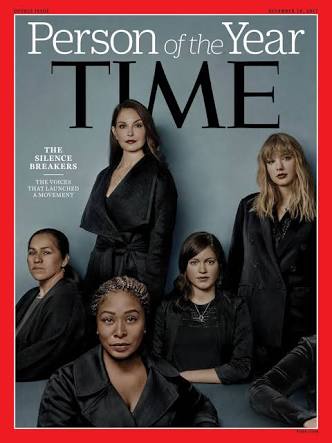Sam Vimes
When I started writing this series, I had not even heard of XYZ. It had occurred to me sometime during 2016 that I was in a state of permanent frustration and annoyance, as every day more and more of what was going on around me made no sense. Whether it was the political circus around the US elections, the endless shenanigans around Brexit, the EU’s open-door migrant policy and the consequences wrought through the demonisation of anyone opposed to the introduction of radical Islam into the European mainstream, I was always “that guy” at the dinner party sitting there wondering just what the hell was wrong with me, as none of my views seemed to agree with those of my liberal peers.
So I started jotting down notes in a journal. Nothing fancy mind you, but when I came across an interesting article, I would look into it, follow a lead, do my research; what I realised over the course of this past 12-18 months is that my frustration is due to my being the sane one sitting in the asylum. What started to coalesce in my mind was a framework of several issues which, whenever one would be discussed, it would very quickly become apparent that the interconnectedness of the issues couldn’t be ignored.
So, thank you to the editors of XYZ for giving me the chance to put pen to paper and have a bloody good vent!
In parts 1 and 2 of this series, I wrote about the issues of Same Sex Marriage, Radical Gender Theory, Immigration and Multiculturalism, in the context of my viewpoint that these have been used to foment a societal shift in the West over the past few decades in particular. Continuing my narrative of these subjects, no discussion of the Bizarro-World of [now] 2018 would be complete without a thorough look at the new feminism that spread around the globe in 2017 like a purple-haired brain parasite.
Let’s start off by setting the scene. Google “Top moments of feminism 2017” and you will come across a host of articles such as the one below.
http://www.harpersbazaar.com/culture/features/g14456966/best-moments-for-women-2017/
Although I clicked on this one randomly at first, I decided to stick with it as it looked to offer an un-ironic point of view that, while liberal, isn’t too extreme. The magazine tends to focus more on celebrity, beauty, style – things that I’m not particularly bothered about. If you want the Top 15 Celebrity Baby Names for 2018 or The Biggest Fashion Moments to Relive from 2017, for example, then Harper’s Bazaar has you covered.
Before we run through the Top 3 moments of the year according to the article, let me just express my relief that the topless “feminist-snatching-baby-Jesus-from-the-nativity-scene” incident at the Vatican happened just a week or so ago on Christmas Day, since otherwise I’m sure this feminist airhead would have usurped the glory from the real feminist moments below.
#1: The Women’s March Becomes the Largest Single-Day Protest in U.S. History
Yes, the day of protest on Donald Trump’s Inauguration Day, featuring the pussy hats, Madonna dreaming about blowing up the White House, Ashley Judd fetishising her period blood, and generally a coterie of confused liberals screaming at the sky, and championing something (anything) vaguely anti-Trump – is the #1 best moment for feminists in 2017. The article claims its purpose was “to send a message loud and proud across the world” which is interesting, as the only message it sent to me was that liberals in the US are terrible losers and that those liberals who had booked their travel and accommodation arrangements months prior in order to attend the coronation of Hillary Clinton, were upset they couldn’t get a refund, and made a day of it anyway.
#2: Meryl Streep Delivers a Powerful Speech at the Golden Globes
You remember, the one where she cried crocodile tears, and lamented losing her mind at how “vilified” Hollywood, foreigners and the Press had suddenly become during “the Age of Trump”, then proceeded to ridicule followers of NASCAR and Mixed Martial Arts as being filthy Trump-voters? Yes, this glorious paragon of feminism, this open supporter of Harvey “God” Weinstein, defender of Roman Polanski and critic of middle-America, including the millions of American women that watch NASCAR and MMA, is the #2 best moment for feminism in 2017.
#3: “Nevertheless, She Persisted”
The expression used to describe a fairly mundane exchange between Democrat Senator Elizabeth Warren and the Republican Senate Majority Leader Mitch McConnell, when the latter cut Warren off from delivering a lengthy sermon during the proceedings in February 2017 to appoint Attorney General Jeff Sessions. Taken up as a feminist “rallying cry” for women everywhere by the liberal media, notwithstanding McConnell had treated Warren as he would have any other participant at the hearing whose intention was to break the rules, it was touted as evidence of an epidemic of sexism under the new Trump Empire, prompting mass hysteria, social media outrage and a trending #ShePersisted hashtag, and even a children’s book of the same name by Chelsea Clinton ($13.49 on Amazon). Never mind that Elizabeth Warren is a hypocritical one-percenter whose female staff earn 77c on the dollar compared to their male colleagues, and who falsely claimed to be a Cherokee-Indian to get ahead in her academic career, likely at the expense of a real Native American woman. Way to go, feminist hero #3.
With the Top 3 out of the way, I need to give an honourable mention to:
#10 – The #MeToo Movement Goes Global

What started out seemingly as a response to acts of sexual predation in Hollywood centred around mogul Harvey Weinstein, soon morphed into a viral witch-hunt of not just high-profile celebrities, but politicians, business leaders and the like, and ended up with #MeToo being chosen as Time Magazine’s “Person of the Year” for 2017. A lot of polemic has been written about the subject of the “patriarchy” having kept women in silence, the bravery and the allegations, but what so many seem to have forgotten about is the concept of due process – victimhood was elevated above the presumption of innocent until proven guilty.
Ella Whelan, the Associate Editor of Spiked Online, says it best when she notes, “The darker side of #MeToo, the thing that no one wants to talk about, is that it has morphed into a fetishisation of victimhood. Time’s glorification of the ‘Silence Breakers’ goes beyond showing solidarity with victims of sexual assault, and instead risks glorifying the very fact of being a victim … [and] seems to suggest that once we have had something done to us, against our will, however large or small, we’re changed, tainted, traumatised. There’s something almost Scarlett-Letter-like about this parading of victimhood.”
This is what feminism encompasses in 2017 – a preening celebration of victimhood, hysteria and hypocrisy that seems to me to be no longer about gender equality, but about rallying confused and depressed liberal women (and the rapey, soy-milk-drinking beta males that they attract) behind the banner of perceived sexism. This is cultivated by the media and promulgated by feminists themselves as an attack on anything remotely masculine, conservative or Western. After all, 2017 was the year that the hijab became the #1 symbol of feminist resistance.
So here I return again to why. At this point I concede that in order to answer that question, we must necessarily delve back into the world of gender theory, as the history of feminism, gender and sexual identity are themselves interconnected.
Over the past few years, more and more feminist academics, columnists, and celebrities have “come out” as gender nonconforming, non-binary, gender fluid, genderqueer or <insert attention-seeking non-traditional sexual orientation here> – under the guise of not wanting to conform to gender norms imposed on them by society. Nowadays, gender can change from moment to moment, gender is a social construct – gender isn’t static or black-and-white, but a “spectrum”; nothing is disallowed.
It reminds me of kids making up rules for a game: just when I think I have it figured out, along comes another one.
But these attitudes haven’t just sprung up overnight like mushrooms on a lawn; they’ve been cultivated over decades, and the litany of developments is something I will tackle in Part 4, tentatively titled, “Why do transgender women still get prostate cancer???”










